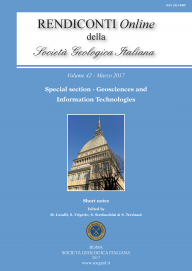
Clustering sediment connectivity maps to distinguish hillslope processes
Stefano Crema (a) & Giulia Bossi (a)
(a) National Research Council, Research Institute for Geo-Hydrological Protection, corso stati uniti, 4, 35127, Padova, Italy.
Corresponding author e-mail: stefano.crema@irpi.cnr.it.
Volume: 42/2017
Pages: 23-26
Abstract
The availability of increasingly higher resolution Digital Terrain Models (DTMs) allows to perform a detailed characterization of the morphological features on selected areas of interest. There is a growing interest, within the scientific community, for automatic DTM-based procedures to extract geomorphological features or to model surface processes. Among these, the Index of sediment Connectivity (IC), which estimates the degree of linkage that controls sediment fluxes throughout landscape, and, in particular, between sediment sources and downstream areas, has proved to be a powerful morphometric tool. In particular, IC may be used to better portray and highlight sediment dynamics and pathways at catchment scale. In this work, we compare IC maps for two alpine areas. The first area is a typical debris-flow catchment, while the second area
is characterized by the presence of a large deep-seated gravitational slope deformation. Two types of numerical analysis are presented:
i) the aggregation and normalization of the IC values and ii) cluster analysis. Our preliminary results show that the spatial information, which is maintained in the cluster analysis and lost in the aggregate procedure, is extremely valuable for the identification and the clustering of areas that are affected by the same predominant geomorphological process.
Keywords
Get Full Text